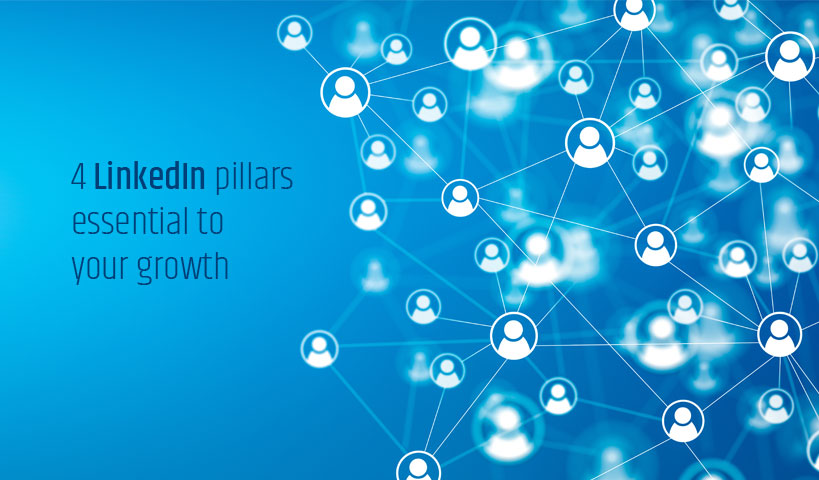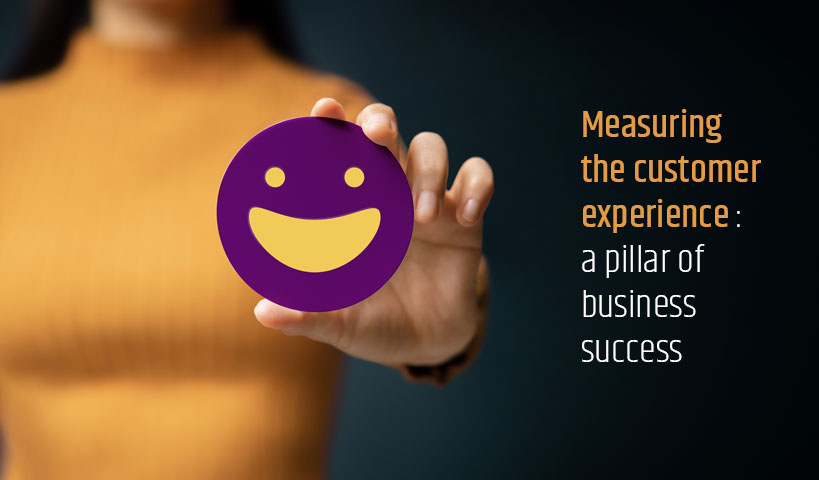
In today’s marketing world, there are many strategies, both traditional and digital, available to you as a company. They’re all aimed at raising your profile in the marketplace and communicating with your customers. We’re talking about social networks, newsletters, blogs, podcasts, webinars, websites, events and more.
This is where good business communication strategies come into play, enabling you to identify, but above all, bring diversity to the communication channels in your plan that will be most beneficial to you. Here’s why.
Good strategies first and foremost
The objective of one or more marketing strategies is first and foremost to establish the communication channels that meet your objectives and will reach your target clientele. A good communication channel is chosen according to your target, your objectives and your positioning.
Why be present and deploy marketing efforts on the latest media or social network when your persona isn’t? Waste of time and precious resources? Unfortunately, yes!
There was a time when your company could buy a page of advertising in the local newspaper every week, and that was the way it marketed itself. Today, with all the diversity, evolution and technology out there, it goes without saying that a multitude of avenues are open to you.
What is multi-channel marketing?
Just as a diversified investment portfolio offers protection against market fluctuations, diversifying your communication channels is also a way of ensuring better returns.
The term “multi-channel” refers to a marketing and communications approach that exploits a variety of distribution channels, both physical and virtual.
There are many factors that can cause organizations to focus on only one or a few channels at a time in their strategy: lack of resources, finances, time, money, etc. And yet, many companies today are focusing their communications on social media. These days, many companies focus their communications on social media, since they are ubiquitous in our daily lives, accessible and easy to use. And yet!
The adage “don’t put all your eggs in one basket” applies perfectly to B2B marketing. Diversification of communication channels should not be seen as a mere option, but rather as a fundamental pillar of your marketing strategy.
Here’s a brief, non-exhaustive list of all the types of communication channels you can apply in your communications plan:
| 🔲 Social Networks | 🔲 Direct Mail |
| 🔲 Web Site | 🔲 SEO |
| 🔲 Newsletter | 🔲 Press Relations |
| 🔲 Blog | 🔲Digital advertising |
| 🔲 Videos | 🔲 Print advertising |
| 🔲 Podcast | 🔲 Events (trade fairs, exhibitions) |
| 🔲 Live Stream | 🔲 Radio |
| 🔲 Webinars | 🔲 Television |
The benefits of multi-channel communication strategies
Multi-channel communication strategies in B2B (Business-to-Business) refer to the approach whereby a company communicates with other companies via several channels, be they social networks, webinars, trade fairs, etc. Here are some of the specific benefits of this approach for B2B:
Reaching the right decision-maker: B2B companies often target several decision-makers within a single organization. A multi-channel strategy can help target each of them with the right message, at the right time.
Diversification of contact points: multiple channels make it possible to reach potential customers at different stages of their buying journey, increasing the chances of conversion.
Enhanced credibility: being present on multiple platforms can reinforce a company’s credibility and legitimacy, which is essential in the B2B world where purchasing decisions are often high-value and require a high level of trust.
Content optimization: multi-channel communication enables companies to leverage different types of content (case studies, webinars, blog posts, etc.) to meet the specific needs of B2B customers.
Data analysis: using different channels provides a wealth of data that can help refine strategy, understand customer behavior and identify the most effective channels.
And we continue…
Prolonged engagement: by interacting with potential customers across different channels, companies can maintain prolonged engagement, essential for the often longer sales cycle in B2B.
Relationship building: B2B relies heavily on building strong relationships. Multi-channel communication offers several touchpoints for establishing and strengthening these relationships.
Flexibility and adaptability: understanding performance across different channels means you can quickly adjust strategy in response to feedback and changing trends.
ROI efficiency: by tracking and measuring performance across channels, companies can allocate resources more effectively. This maximizes return on investment.
Comprehensive coverage: B2B decision-makers have varied content consumption preferences. A multi-channel strategy ensures that no one is left out.
Repetition: Ever heard of the Rule of 7? It’s based on the marketing principle that customers need to see your brand or message at least seven times before committing to a purchasing decision.
This is where a diversity of communication channels maximizes your chances of being seen and heard. Your customer first saw you on Linkedin. Then saw you in a magazine ad. He received your newsletter, then consulted your recent blog… etc, etc. You get the idea!
For B2B multi-channel strategies to be effective, it’s essential to ensure consistent communication, to understand the specific needs of the B2B audience. It’s also important to continually evaluate and adjust the approach based on feedback and performance.
It’s the end of Facebook!
Have you heard the news? Impossible, you might ask! Of course, for the moment you’re right, Facebook isn’t closing. But aren’t we safe from the closure of any social platform? What if that day came? Would you have put all your content strategy on your page? What would you have left?
What’s more, social network algorithms are constantly evolving to improve the user experience. This also means that the visibility of your messages can be compromised overnight. That’s right!
Take the simple example of Bill C-18, which recently ended access to news on Facebook and Instagram. Many organizations have had to rethink their channels in order to give priority to their website and newsletter. Fortunately for them, the diversification of their channels was already well in place to adapt their strategy.
Let’s take the example of the blog or newsletter as another channel. These represent a database and a means of distributing content over which you have absolute control. Neither Meta nor any other entity has any control over them. In fact, your content on Facebook and Instagram belongs to Meta. On your blog and newsletter, it belongs exclusively to your company. Not to be overlooked!
Watch out for the trap!
But be careful! Diversifying your communication channels doesn’t mean multiplying your presence to be everywhere. As mentioned above, any strategy will analyze your needs and target the best ways of doing things for you. One thing’s for sure, even in a multi-channel strategy, quality always takes precedence over quantity.
So, what about your strategy? What are your distribution channels?
Need a hand in analyzing, developing and implementing diversified marketing and communications strategies? Team up with our experts.






